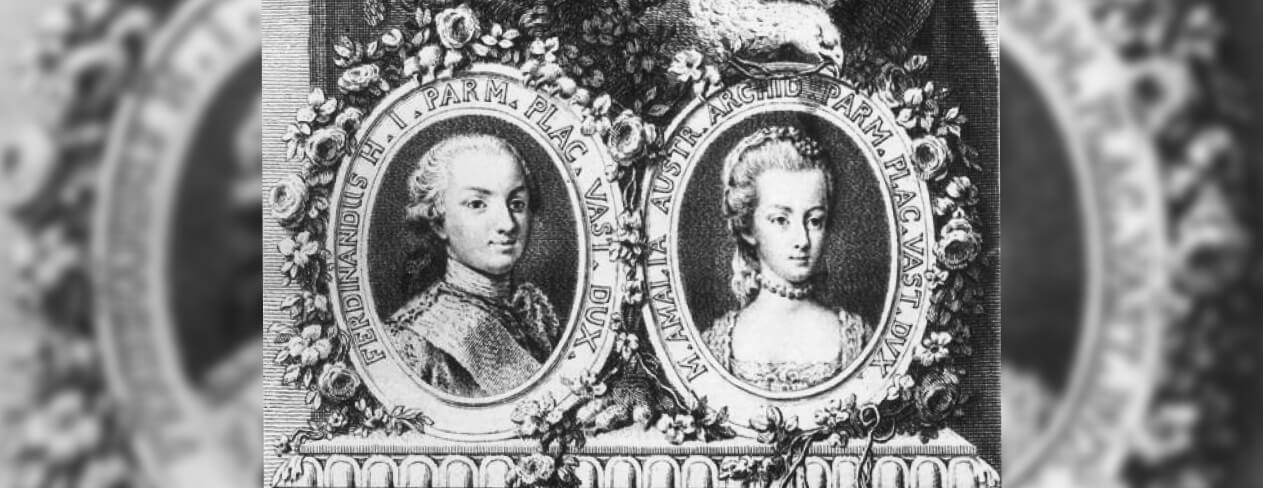
Archduchess Maria Amalia and Ferdinand, heir to the Duchy of Parma, were married on 19 July 1769. The bride was the daughter of Empress Maria Theresa; the groom, a nephew of King Charles III of Spain. Their union formed part of the Empress’s broader policy to strengthen alliances with the Bourbons, who — besides ruling France and Spain — also controlled several smaller realms in Italy.
Vivid, spontaneous, and independent, Maria Amalia had previously been separated from her great love, the Prince of Zweibrücken. She fiercely opposed being married off to the ill-mannered and debauched Ferdinand and never forgave the Empress for it. Her married life unfolded as a textbook example of protest — against both her detested husband and her mother’s politics. She distanced herself from Ferdinand, who, being five years her junior, was a weak and immature character, indifferent to state affairs and religiously bigoted. Within a few years, Maria Amalia manoeuvred the Duchy out of the influence of France, Spain, and Vienna, becoming the de facto ruler of Parma. Her stubborn behaviour earned her much criticism and a controversial reputation both at home and abroad.
Maria Amalia bore nine children, buried five of them in infancy, and later faced the deaths of two more in adulthood. She and Ferdinand were devoted parents — the only aspect of life they had in common.
The execution of her sister Marie Antoinette by the French revolutionaries was a devastating blow from which she never recovered. A decade later, Napoleon abolished the Duchy of Parma. Now widowed, Maria Amalia spent her final years in Prague, where she died in 1804 — depressed, disappointed, and embittered by so many cruel turns of fate.
Access to the Metatext via placing an order for an augmented product. See Terms of Use